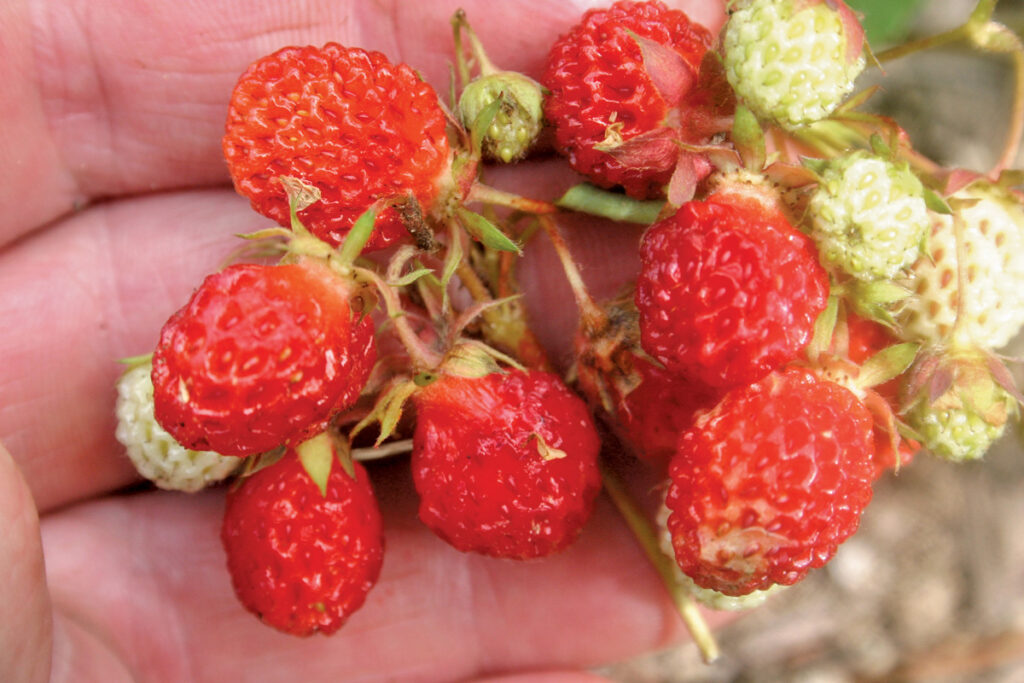Experience-Seeds-Knowledge-Plant Discoveries-Ecological Enrichment-Join Now Click Here!

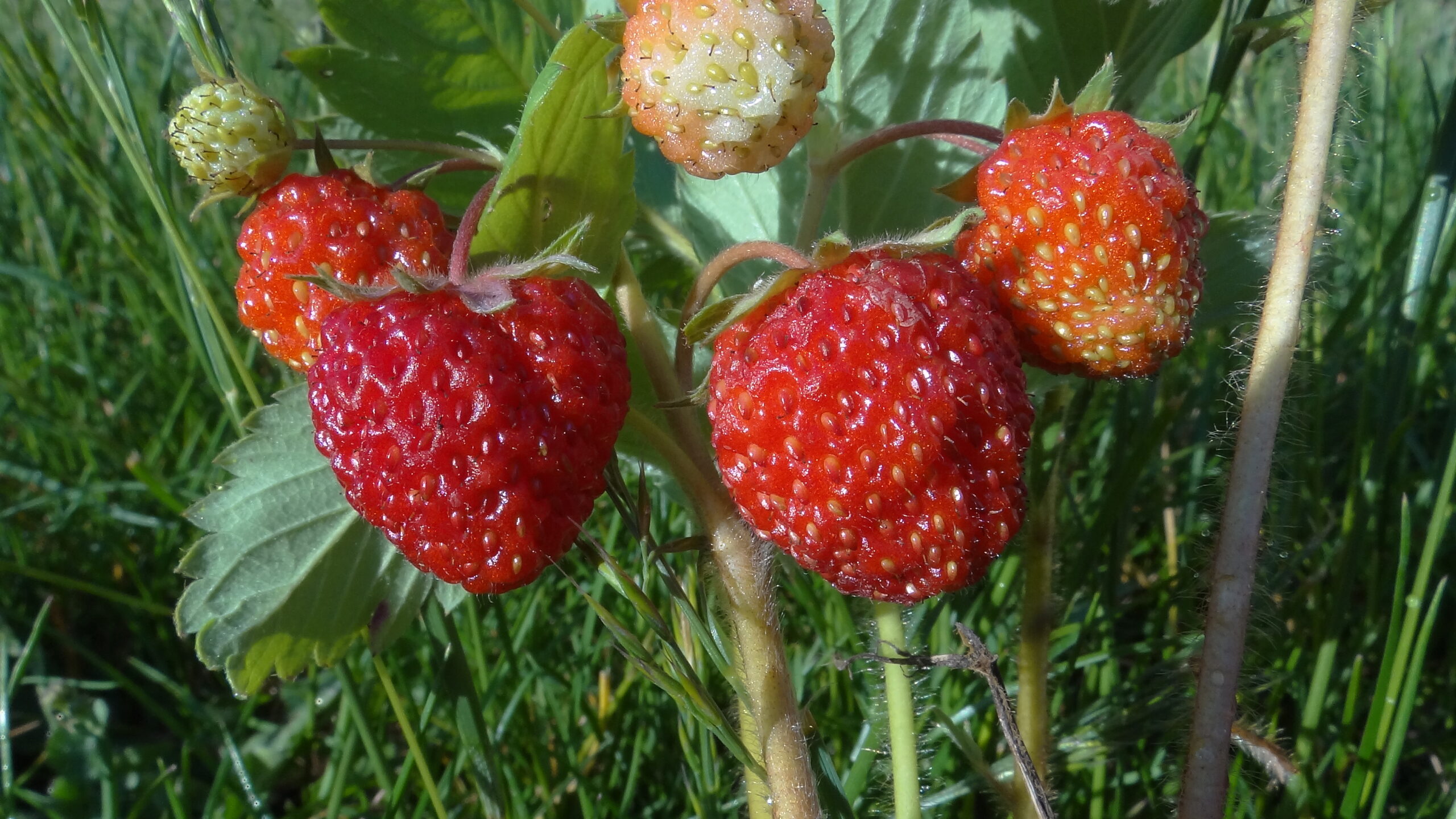
The Flavor Farm Finds the Lemon

Once I hired a someone for my shipping and packing crew who always came to the farm in the morning with the same breakfast. He would first open a package of Ding Dongs on the packing table in front of him and then follow it by cracking open a Diet Pepsi. This combination was working for him. The Pepsi helped in the descent of the ding dongs. Sometimes he would change it up and have a Little Debbie Honey Bun. One day we took a walk together and stopped by the wild strawberry patch I had in front of the barn. This was the selection I found and grew from seed and runners called ‘Intensity’. We started eating a few and he became very excited.
He was not sure what fruit it was. It was delicious. He knew that. Since I didn’t say anything I thought maybe he was confused. He had never had something like this before. The flavor was not what he expected and for him it was not a strawberry. For a person accustomed to Pepsi and ding dongs for breakfast, he immediately recognized this as a delicious healthy food. To me this says something about the power of wild flavors and how that can reconnect anyone even for those who may seem far removed from the flavors of the natural world.
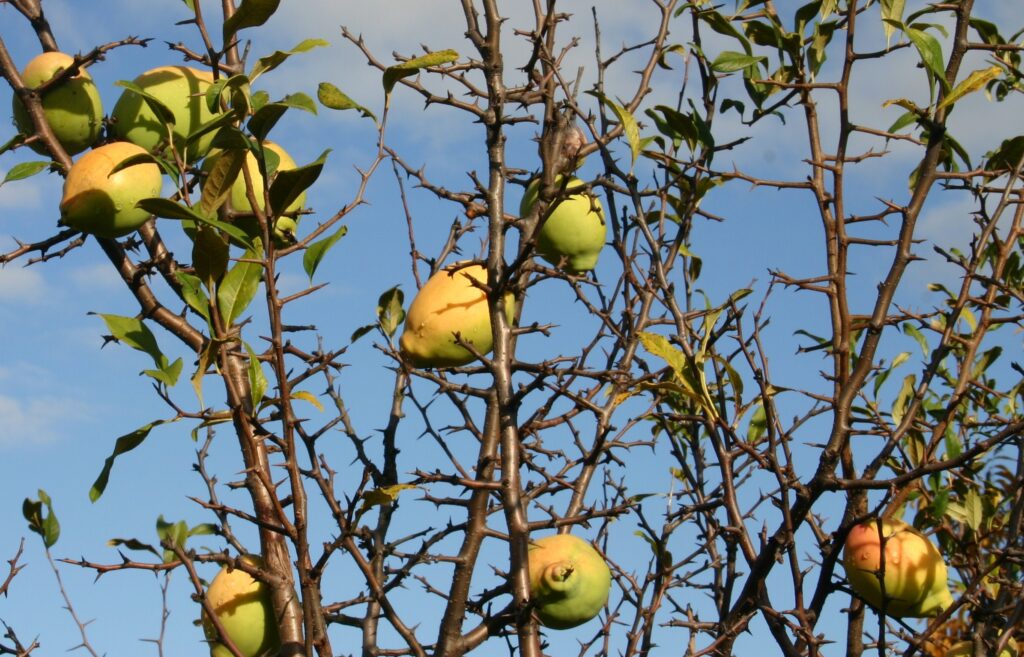
This is the case of the curious quince. It too is a wild fruit in many ways. Most fruit species of this genus are not cultivated for fruit. It is only one genus and species represented in the food isles of the world. I am not going to discuss those selections in this article. But I am wondering about these other genus and species we know are quince yet are not used to any degree. Quince has everything in the flavor department. It contains all the flavors from acidic to the most mellow and smooth. It encapsulates the ‘wow, what is this?’ moments in fruit tasting and draws you in like no other fruit. The fragrance alone are like the wavy lines off a hot summer highway which pull you inward. ‘We are going down to quince town’ it says.
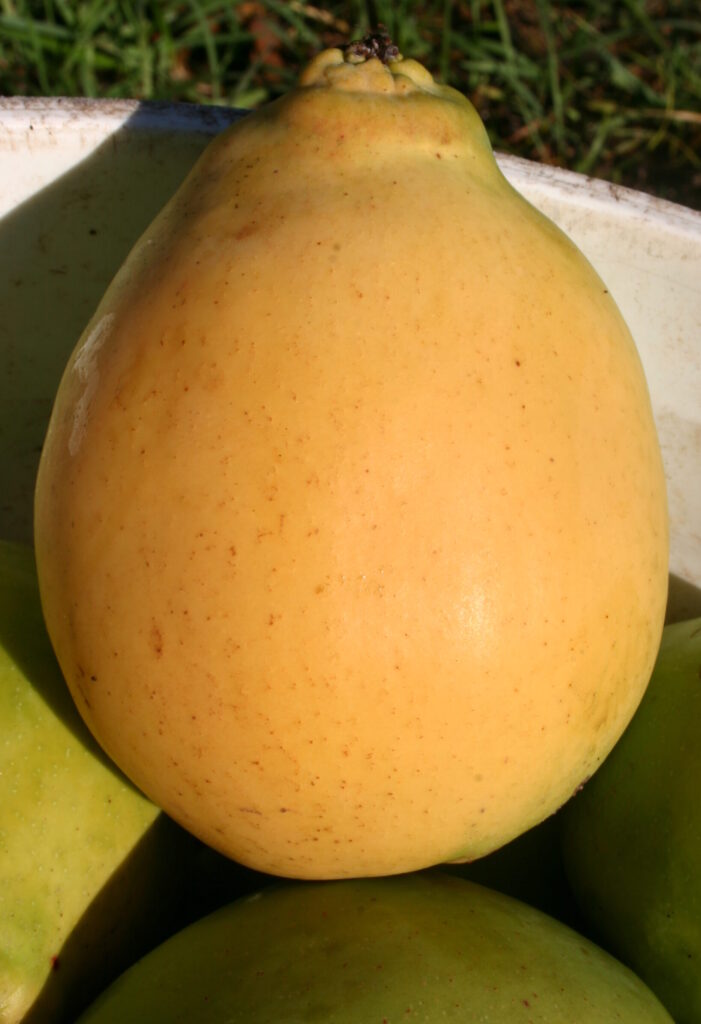
Quizzical Looks and Questions on the Quince
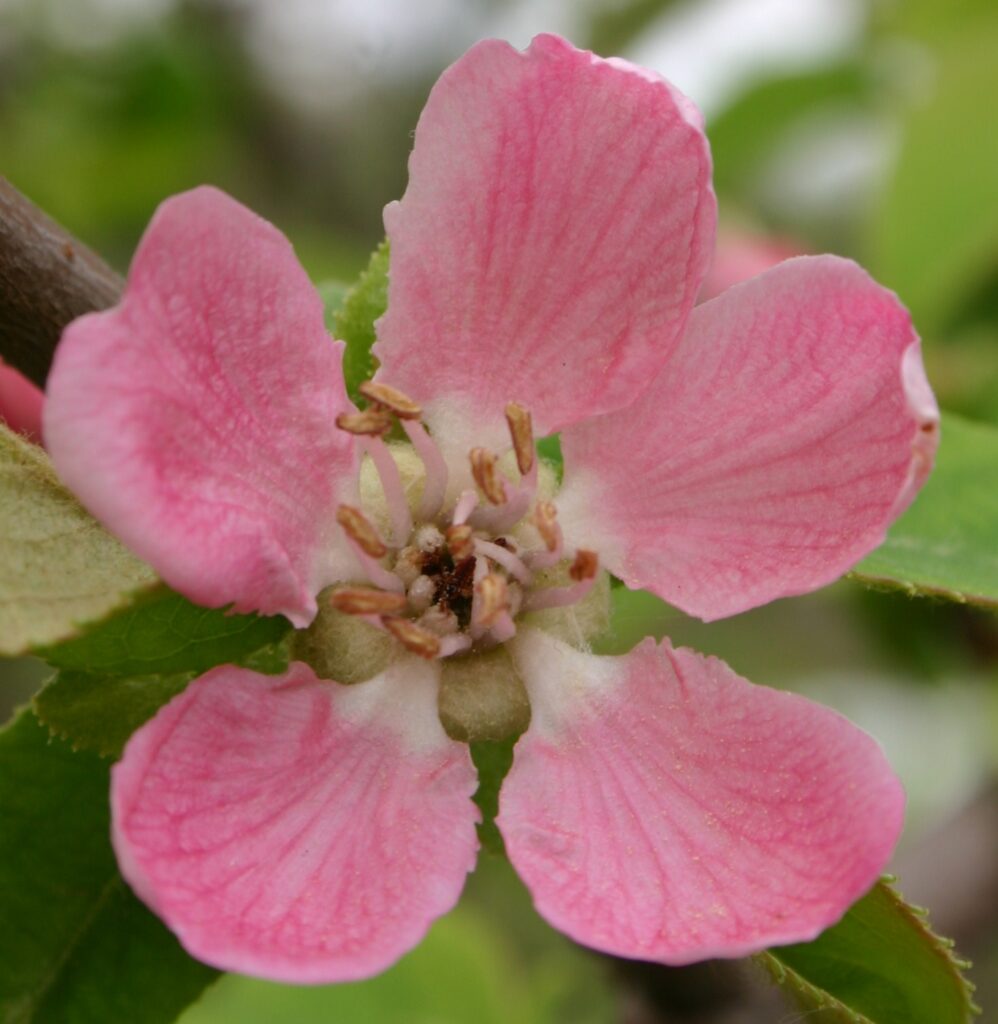
A few days ago I collected three very large fruits of Chinese quince Pseudocydonia sinensis. When you first see them, you wonder how anything that large could remain attached to a twig in a tree. They had recently fallen and were still in good shape. I put them in my cab on a Friday and forgot about them until Monday. When I hopped in my truck on Monday morning, there was wonderful aroma of apple and pear. It was a subtle yet very powerful incense cloaking everything else that had been in the truck this summer covering even the last remnants of pelletized chicken manure. No wonder I grew this fruit. This is what heaven must smell like. I had this flash back of how many of these trees I grew to create a hedgerow and how mother nature seemed a bit cruel to my quince collection. Fireblight nailed the plants mercilessly. It was the great whittling down of quince. This species in particular was not adapted to Michigan. Miraculously two trees did thrive. This highlights my introduction to quince. I had some questions on quince. This is a brief line up of species I was using and their origins.
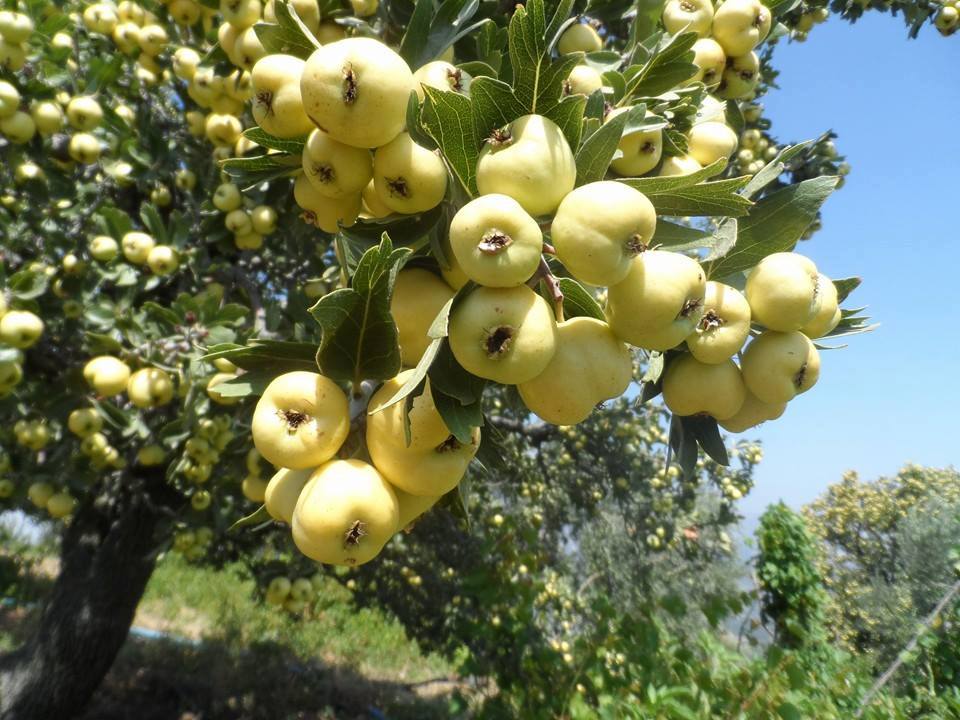
Cathay Quince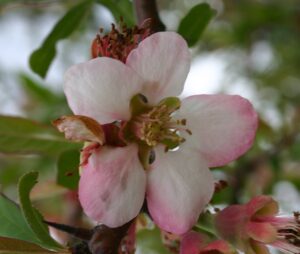
This is the one with amazing thorns or fruit spurs and insanely hard fruit. The flavor is very mild with a bright clean white interior. It is likely other flavors could be infused into the fruit during processing. It is very early flowering. It consistently fruits but has light yields. I improved its vigor and made it possible for seedlings to survive into zone 5. It is normally considered a zone 6-7 plant. The yields have been low for me. I am not sure what to do with the fruit but it is clean and free of all insects and diseases. That is a plus.
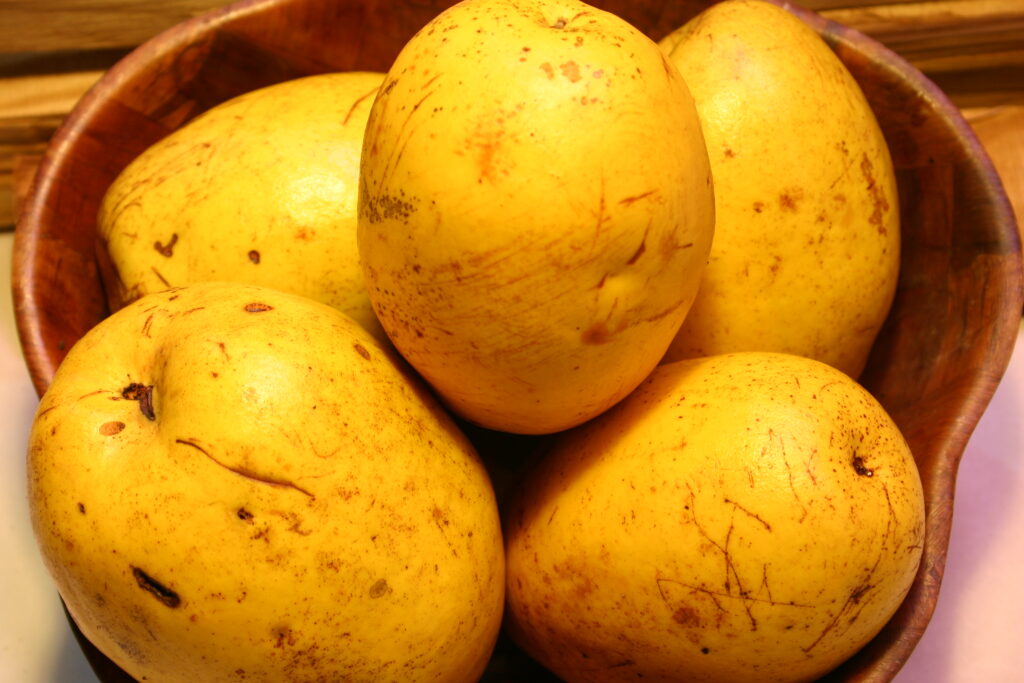
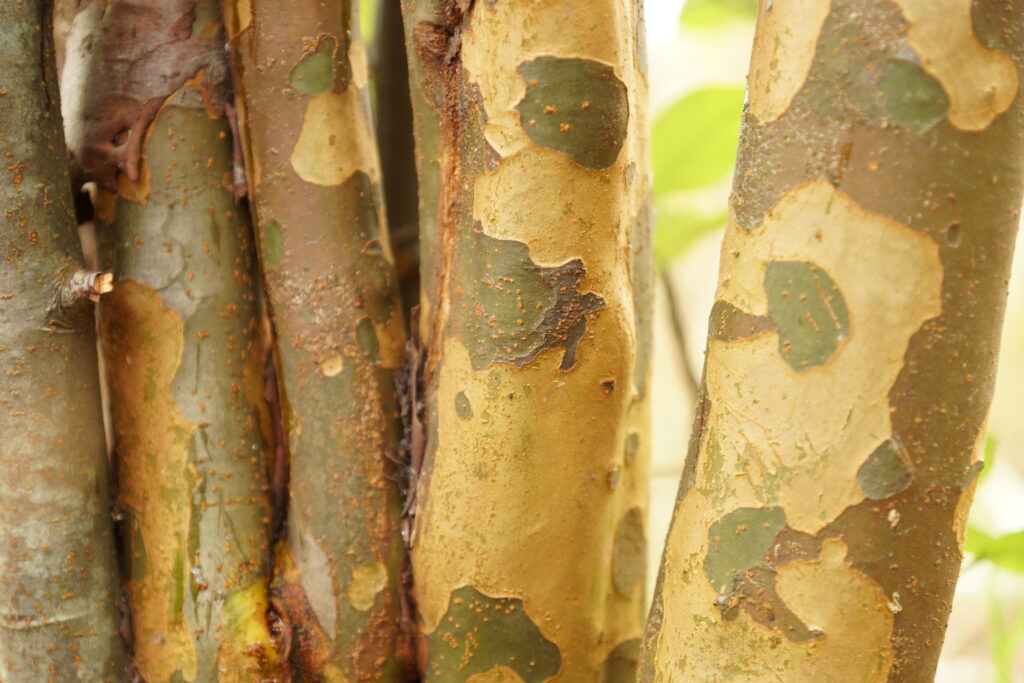
Chinese Quince
One of the most productive and large fruited quinces with extremely mild flavor and hard fruit. Used as a form of confection, it can be boiled in syrup and takes on flavors easily much like apple. This species for a moment was used as an ornamental in the south both for its flowers and bark patterns. It is extremely fast growing and durable. In Michigan it was susceptible to fireblight and its hardiness was iffy at first. As I grew out different seed sources, I was able to fruit a huge variety of them but fireblight whittled down my collection to a few plants. A new generation is being created with the new seeds. On a couple of the plants, the yields were extremely high. The question becomes what to do with the fruit if you had a lot of them. I see in several YouTube videos people boiling the fruit in syrup and canning them just like peaches. The fragrance is just wonderful and a joy just to have in bowl in a closed area.
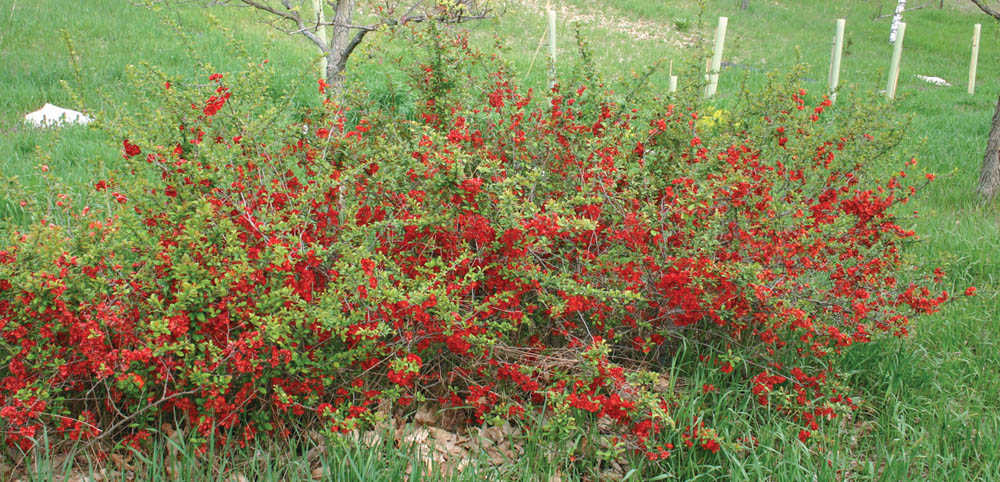
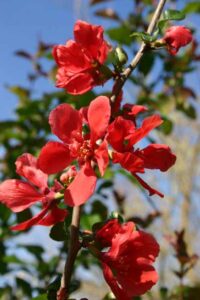

The Ornamental Quince
Most of us are familiar with this species and its hybrids. They are used extensively for its flowers. It is easy to root and has a huge array of flower colors. There are many patented varieties too. It is hardy into zone 3 and is not susceptible to fire blight. Because of the universal love of the flowers, no one has thought of it as a fruiting plant. Most if not all of the ornamental varieties do not fruit as the flowers are essentially structured in a way that doesn’t allow fruit formation. However, it is true once in a while you will find selections with a giant fruit load. This was my experience. Why is it in a hundred fruit row there is one plant with a lot of fruit? So I began buying seed of it from commercial seed houses and then raising the seedlings to fruiting. I also found plants in home landscapes that had a lot of fruit. The fruit quality was variable and different in many ways for each plant that did fruit. Some were so acrid, even tasting them was not possible to any degree. A couple were bright green in color and others were a vibrant yellow with red splotches. The yellow ones seemed to have a more complex flavor. But overall the flavors were in this lemon range with a sort of acerola berry effect. It was here I made selections and began selling the ‘Lemony’ quince as for all practical purposes, it tasted like lemons. I took my creations to some of the farm shows I was doing and shared some with people to see what they thought. The light creamy colored syrup was thick and easy to use. It was a good lemon substitute. I had to finely blend and filter it several times to get the consistency I wanted.
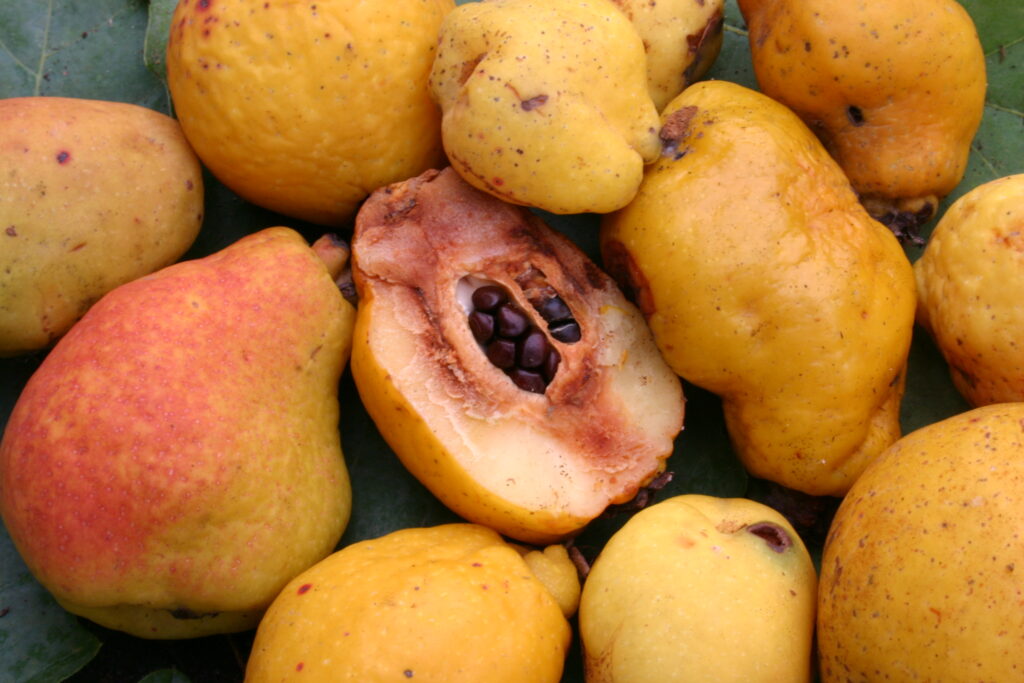
This variety along with others shows the potential of a widely used ornamental plant for capturing a flavor not found in most temperate climates of the world. Since doing this I have found others in Finland and Russia who went down this quince road years earlier and made selections based on yields and flavor profiles. It may have been too variable to raise from seed so the selection process was necessary. I see hedgerows of these being established for its flowers but as secondary fruit crop that can be selected from. The lemon flavor is so precise and clean in this fruit. All of the products that we use lemon for is possible with this quince. At the same time you would not call it a lemon substitute but instead a lemon quince for “Lemony” quince syrup or juice. The idea is to emulate and derive the benefits of the flavor from a fruit that can be grown in an area that lemons cannot. Now the flavor is out our back door and doesn’t have to be trucked and shipped thousands of miles.
I see the use of this fruit much in line with seaberry, aronia, autumn olive, elderberry and black currant in terms of health benefits with similar uses for fruit syrups and juice making. We can use this flavor in so many creative and culinary ways. Maybe we can avoid cracking open that Pepsi and washing down those Ding Dongs and find these rich flavors that Mother Nature has provided for us.
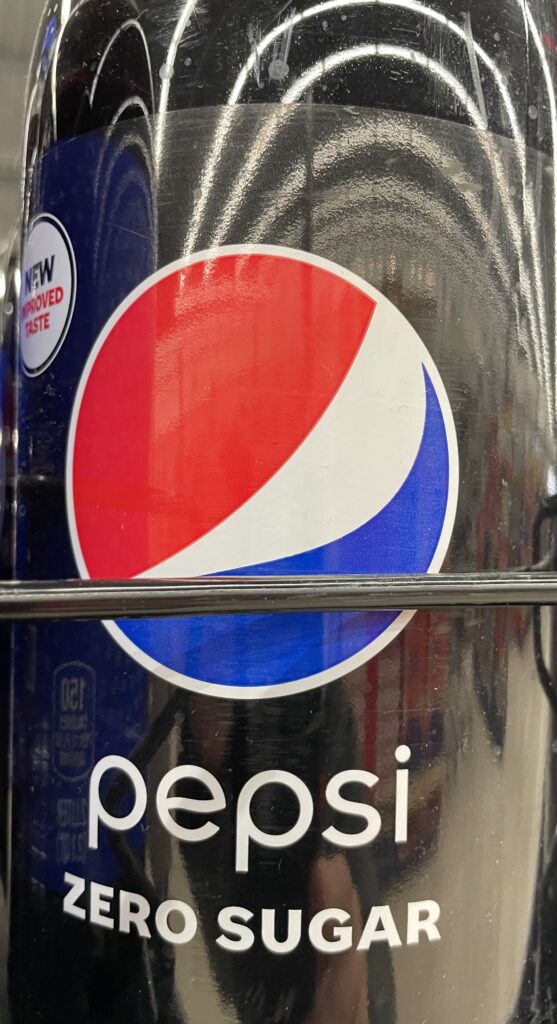
A New Broadway Play Comes to Town :
Descent of the Ding Dongs
Review by Kenneth Asmus
A new Broadway play highlighting Debbie and her love of hybridizing brownies, twinkies and wedding cake has come to town. We find ourselves awash in corn syrup with Debbie lost at sea in a Pepsi bottle only to dream of one day creating a delicious snack cake rich in sugar and triglycerides. While trying to escape she meets a white cake which changes her life forever. Together they discover a chocolate icing that never melts even if left on your dashboard in full sun. From here the story takes us on a high fructose ride to a land filled with flavors unknown to any human or animal palette finally putting the viewer at ease free from any natural food of any type.
Spoiler alerts: The Organic Man is killed off in scene one. He had it coming. He was crushed by three tons of two things that should never go together: organic sugar. Right after intermission, the Natural Food Choir is thrown off a cliff when someone realizes it is a cult. They did keep in tune all the way to bottom of the chasm. This translated to four minutes of au Capella. A bit long but I did find that inspiring. In act four, we find GMO SOY LADY trying to win us over with her good looks, charm and intelligence telling everyone, “I am just like you.” As usual she was over dressed. You guessed it. Into the chasm she went. And not a moment too soon in my opinion. GMO Corn Man tried to make an appearance here but as luck would have it, Organic Man comes to life at the last moment only for both to fall into the mouth of an active volcano. Quite dramatic. The crowd was on their feet after this dramatic moment.
I would go see this play. Descent teaches us that Ding Dongs are the rubber duckies in the bathtub of life and not a whole lot more.
Enjoy. Kenneth Asmus
